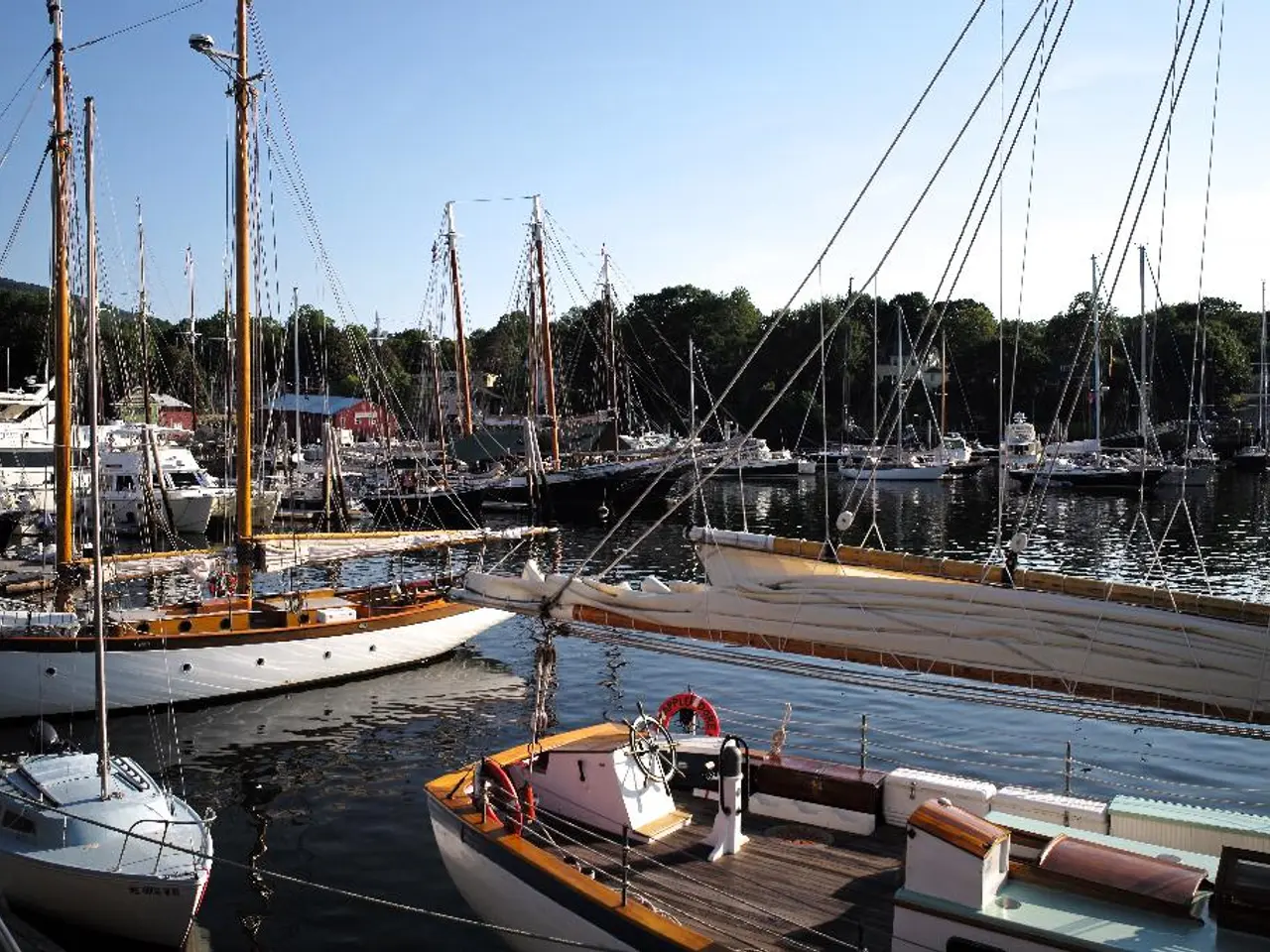Challenges in Revitalizing Brazil's Research Vessels in the Field of Hydrography
Brazilian Hydrographic Service Enhances Navigation Safety with New Vessels
The Brazilian Hydrographic Service has expanded its fleet with the acquisition of two new vessels, the "Caravelas" and the "Vital de Oliveira", as part of a project aimed at improving the safety and prosperity of navigation in the fluvial traffic of the Paraguay and Parana Rivers, as well as the Amazon Hydrographic Basin and the Pantanal Hydrographic Basin.
The Fluvial Hydro-Oceanographic Vessel "Caravelas", introduced in 2014, is a 25.84-meter-long vessel with a breadth of 7 meters and a draft of 0.79 meters. It is capable of carrying a crew of 14 and has a cruising speed of 7 knots with a range of 800 nautical miles. The "Caravelas" operates within a waterway that runs from Nueva Palmira in Uruguay to Cáceres in Brazil, encompassing the Paraguay and Paraná Rivers.
The "Caravelas" is equipped with a hydrographic motorboat fitted with a Kongsberg Multi-beam Echo Sounder EM3040 Dual Head for hydrographic survey operations. This advanced technology allows the vessel to conduct detailed surveys of the waterway, contributing to the ongoing integration between the Brazilian Hydrographic Service with other agencies from Paraguay and Bolivia.
The "Vital de Oliveira", another vessel acquired by the Brazilian Hydrographic Service, is a hydro-oceanographic research vessel with an overall length of 78 meters and a width (beam) of 20 meters. It operates under the Brazilian flag as a research/survey ship dedicated to marine and oceanographic studies. The "Vital de Oliveira" is equipped with advanced technology for hydrography and oceanographic research, including a remotely operated vehicle (ROV) capable of working at depths up to 4,000 meters. This vessel is for surveying the offshore maritime area.
The acquisition of these vessels is crucial for the Brazilian Hydrographic Service, which faces a significant challenge due to the vast area and 40,000 km of inland navigable waters. The service has been working with a fleet of at least 15 vessels, with six research ships over 1000 ton and nine ships between 100 and 1000 ton as of the end of 2014.
The "Rio Branco", a large ship able to carry out hydro-oceanographic surveys in the Amazon region, was built as part of a project with the Center for the Management and Operation of the Amazon Protection System (CENSIPAM). Large, fully loaded convoys depart from terminals located mainly in Corumbá (Brazil), heading to the important Mercosur capitals (Asuncion, Buenos Aires and Montevideo).
These new acquisitions are expected to greatly enhance the Brazilian Hydrographic Service's capabilities in conducting hydrographic surveys, contributing to the safety and prosperity of navigation in the vast waters of the Paraguay and Parana Rivers, the Amazon Hydrographic Basin, and the Pantanal Hydrographic Basin.
References: [1] Brazilian Hydrographic Service [2] Vital de Oliveira
- The advanced technology on the "Caravelas," such as the Kongsberg Multi-beam Echo Sounder, plays a significant role in the science of hydrographic survey, which is crucial for the safety of navigation in the fluvial traffic.
- The "Vital de Oliveira," with its sophisticated equipment like the remotely operated vehicle, contributes to environmental-science and data-and-cloud-computing efforts by conducting detailed surveys of the offshore maritime area, impacting climate-change studies.
- The integration of technology in hydrographic survey, Data-and-cloud-computing, and environmental-science, as demonstrated by the Brazilian Hydrographic Service's new vessels, will continue to shape the way we navigate and understand our environment.




